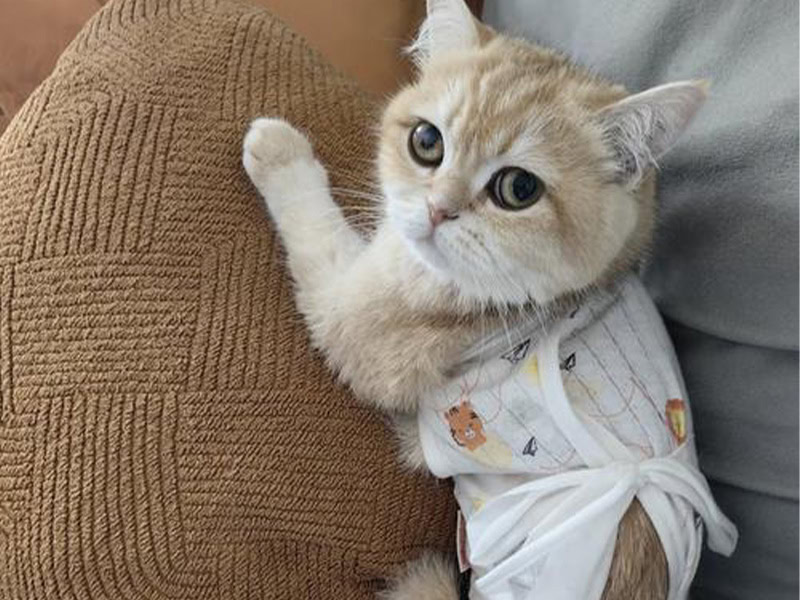
Spaying is a common surgical procedure performed on female cats to prevent unwanted litters and reduce the risk of reproductive diseases. While the surgery is routine, the post-operative recovery process is critical to ensuring your cat’s health and well-being. In this guide, we will cover the spaying procedure, recovery timeline, essential care tips, and long-term considerations for your cat’s health.
Understanding the Spay Procedure
Spaying, also known as an ovariohysterectomy, is a surgical procedure that removes the ovaries and uterus of a female cat. This operation requires opening the abdominal cavity, making it more complex than neutering male cats. During the procedure, your cat will be placed under general anesthesia to ensure a smooth and painless operation. After the surgery, the recovery process involves both physical and mental healing.
Recovery Timeline
• Initial Healing (7-10 days): The surgical incision will start to heal, forming a protective scab that eventually falls off. However, factors such as your cat’s overall health, the quality of the surgery, and post-operative care can influence the healing process.
• Full Recovery (15-30 days): Your cat’s immune system will gradually rebuild, and her energy levels will return to normal. Proper care during this period is crucial to ensure a smooth recovery.
Essential Post-Spay Care Tips
1. Warmth and Rest:
After surgery, your cat may feel weak and sensitive to temperature changes. Provide a warm, quiet, and comfortable space to help her recover without external stress. Avoid excessive handling and prevent her from engaging in strenuous activities that could cause wound complications.
2. Elizabethan Collar (E-Collar) Use:
Cats instinctively lick their wounds, which can lead to infection or delayed healing. An E-collar should be worn immediately after surgery and kept on until the wound is fully healed.
3. Wound Care:
• Check the incision daily for any signs of redness, swelling, discharge, or unusual odor.
• Keep the wound clean and dry. Use a veterinarian-approved antiseptic solution like povidone-iodine for cleaning.
• Avoid excessive use of ointments or disinfectants, as they may interfere with natural healing.
4. Dietary Adjustments:
• Your cat’s appetite may decrease after surgery, so provide soft, easily digestible foods such as wet food or nutritional supplements.
• Ensure she has access to fresh water to stay hydrated.
• Gradually transition back to her regular diet as her appetite improves.
5. Medication Management:
• Administer any prescribed anti-inflammatory or pain-relief medications as directed by your veterinarian.
• Never give human medications to your cat, as they can be toxic.
6. Monitoring and Record-Keeping:
• Observe your cat’s behavior, energy levels, eating habits, and bowel movements.
• Keep a record of any unusual symptoms and consult your veterinarian immediately if complications arise.
Handling Post-Surgery Complications
While most cats recover without issues, some complications can occur, such as:
• Infection: Signs include excessive swelling, redness, pus, or a foul odor from the wound.
• Internal Bleeding: If your cat appears lethargic, weak, or pale, seek veterinary attention immediately.
• Peritonitis: This serious abdominal infection requires urgent medical care and can be life-threatening.
If you notice any alarming symptoms, contact your veterinarian promptly.
Long-Term Effects of Spaying
After spaying, your cat will experience hormonal changes that can affect her behavior and metabolism. Common changes include:
• Calmer temperament: Many cats become more affectionate and less aggressive.
• Reduced activity levels: Some cats may become less active, making them prone to weight gain.
• Increased appetite: Without proper portion control, spayed cats are at higher risk of obesity.
To maintain a healthy weight and prevent obesity-related issues, encourage regular exercise and monitor her diet carefully.
Conclusion
A female cat’s recovery after spaying requires attentive care, patience, and proper post-operative management. By ensuring a warm resting space, monitoring her wound, adjusting her diet, and providing necessary medications, you can help her heal comfortably and quickly. Spaying not only prevents unwanted litters but also improves your cat’s long-term health by reducing the risk of reproductive diseases. As responsible pet owners, prioritizing post-spay care ensures a happy and healthy life for your feline companion.
